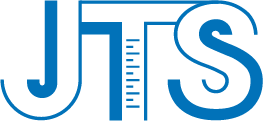Restricted substance testingProduct
Your Location:Home > Restricted substance testingWhat is REACH?
(EC) No 1907/2006The EU REACH Regulation (Registration, Evaluation, Authorisation and Restriction of Chemicals) is a comprehensive chemicals management regulation enacted by the European Union in December 2006, which came into effect on 1 June 2007. It was established based on long-term considerations for protecting human health and environmental safety. The REACH Regulation applies to all chemical substances, including those used in industrial processes and everyday products. Its objective is to implement preventive management for all chemicals entering the EU market.
REACH Scope of Control
•Substances: Chemical elements and their compounds, as occurring in nature or obtained by any manufacturing process.
•Mixtures: Mixtures or solutions composed of two or more substances.
•Articles: Objects which during production are given a special shape, surface or design which determines their function to a greater degree than does their chemical composition.
Key Elements of the REACH Regulation
•Registration: Applies to chemical substances manufactured in or imported into the EU (as substances on their own, in mixtures, or substances intended to be released from articles).
•Notification: Pertains to articles containing substances on the Candidate List (Substances of Very High Concern - SVHC).
•Authorisation: Concerns the use of substances listed in Annex XIV (the Authorisation List).
•Information Provision:
(a) For substances or mixtures: Safety Data Sheet (SDS) transmission.
(b) For articles: Required when an SVHC concentration is > 0.1% (w/w).
•Restriction: Controls the use of certain hazardous substances, mixtures, and articles as listed in Annex XVII.
Detailed Explanation of Key Points
•Registration: This obligation primarily targets manufacturers or importers of substances on their own or substances in mixtures. If you manufacture or import an articleinto the EU, you generally do not need to register each substance contained in your product, but you must fulfill other obligations such as information provision. Registration requires submitting substance information to the European Chemicals Agency (ECHA), including substance identity, tonnage, physicochemical properties, toxicological information, classification and labelling, and safe use guidance. For substances imported or manufactured at 10 tonnes or more per year, a Chemical Safety Report (CSR) is also required.
•Evaluation: ECHA evaluates registration dossiers for compliance (Compliance Check) and assesses substance risks (Substance Evaluation).
•Authorisation: The use of Substances of Very High Concern (SVHC), which may be included in the Authorisation List (Annex XIV), requires authorisation from the European Commission.
Companies must apply for permission to continue using these substances, otherwise they may face market restrictions.
•Restriction: Annex XVII of the REACH Regulation lists restrictions on the manufacture, placing on the market, and use of certain dangerous substances, mixtures, and articles. This means these substances are directly prohibited or restricted within the EU market. Restrictions may include a ban on placing on the market, prohibition of certain uses, or specific concentration limits.
Example Update: On August 11, 2025, the European Commission adopted Regulation (EU) 2025/1731, amending REACH Annex XVII by adding restrictions for 16 CMR (Carcinogenic, Mutagenic or Toxic to Reproduction) category 1B substances. These newly restricted substances include:
——Tetrabromobisphenol A (TBBPA): Widely used as a flame retardant in printed circuit boards (PCBs) and plastic casings.
——Dibutyltin oxide: Commonly used as a heat stabilizer in PVC materials (e.g., wires and cables).
——Bisphenol AF (BPAF): Used in high-performance seals, gaskets, and special cable coatings.
This amendment enters into force on September 1, 2025. For these CMR substances, the concentration limits in mixtures follow those set by the CLP Regulation: ≥ 0.1% w/w for Carc. 1B and Muta. 1B, and ≥ 0.3% w/w for Repr. 1B.
•Information Provision (Article 33): This obligation concerns articles containing SVHCs.
If an article contains an SVHC present above 0.1% (w/w), suppliers must provide the recipient of the article with sufficient information to allow safe use, including at least the name of the substance.
This information must also be provided free of charge to consumers within 45 days upon request.
Furthermore, if an article contains an SVHC above 0.1% (w/w) and the total quantity of that article supplied to the EU market exceeds 1 tonne per producer or importer per year, a notification to ECHA (SCIP notification) is also required. The SCIP database aims to ensure the safe use and handling of articles throughout their lifecycle.
Non-compliance with the REACH Regulation can lead to:
——Product recalls.
——Significant financial penalties.
——Loss of market access.
J-Testing is a CNAS, CMA, and CPSIA accredited laboratory, committed to providing global clients with professional third-party testing, consulting services, and cross-border certification assistance.






 Our Service
Our Service
